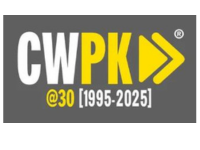Islamabad’s public transport system is taking a digital leap as citizens will now be able to access real-time information on electric buses directly through Google Maps. This development, aimed at improving the daily commute experience, was confirmed during a meeting chaired by Chairman Capital Development Authority (CDA) Muhammad Ali Randhawa. He directed officials to upload comprehensive electric bus data to Google Maps, including routes, stations, and arrival times. The initiative is designed to support environment-friendly travel and make trip planning easier for the city’s growing number of bus commuters.
To ensure visibility and ease of use, electric buses will appear in different colours on Google Maps, along with detailed stop information and live tracking features. This move reflects CDA’s broader commitment to leveraging digital platforms for public benefit and transport efficiency. By enabling travelers to check bus details from their phones or computers, the authority aims to reduce uncertainty, waiting times, and congestion at bus stops.
In another digital advancement, Randhawa instructed teams to enable debit and credit card payments for bus fares. The system will support Visa and MasterCard, and CDA has been tasked with working closely with banks to enable seamless electronic fare collection. This aligns with national goals to reduce cash-based transactions and promote financial inclusion in public services. Plans are also in motion to launch various travel packages and discount cards for regular commuters, with additional fare relief for students, daily wage earners, and senior citizens.
The electric bus initiative, which continues to gain traction, now serves around 95,000 passengers daily. Officials report steady progress and confirmed that additional routes will be introduced as part of service expansion efforts. This digital transformation is part of a broader strategy to modernize Pakistan’s urban mobility infrastructure through technology and sustainable practices.
However, the improved services come with a revised fare structure that has sparked concern among passengers. Effective June 1, 2025, fares for Islamabad’s metro and feeder bus services have doubled from Rs 50 to Rs 100. This includes the Orange, Green, and Blue Line Bus Feeder routes as well as the Electric Feeder Service. The Orange Line’s previously higher fare of Rs 90 for the N-5 to Airport route is now Rs 100 as well. In contrast, the fare for the Rawalpindi–Islamabad (Red) Metro Bus remains unchanged.
This fare hike, according to officials, is necessary due to increased fuel costs and overall operational expenses. While intended to sustain service quality, the 100 percent increase has raised affordability concerns, especially for low-income commuters. Several have suggested a shift to a distance-based fare model to ensure fairness. Earlier reports hinting at a fare rise from May 26 had been officially denied, but the revised pricing has now been formally implemented.
As the system integrates further with digital tools, citizens are encouraged to use Google Maps for up-to-date route and timing information, and to make use of future electronic payment options for added convenience.








